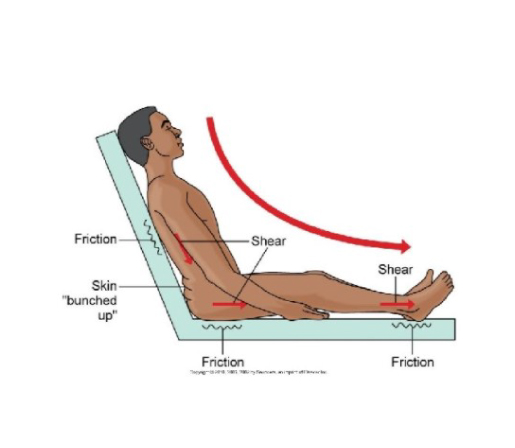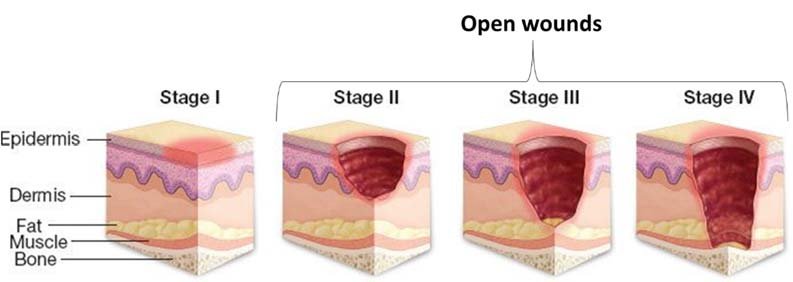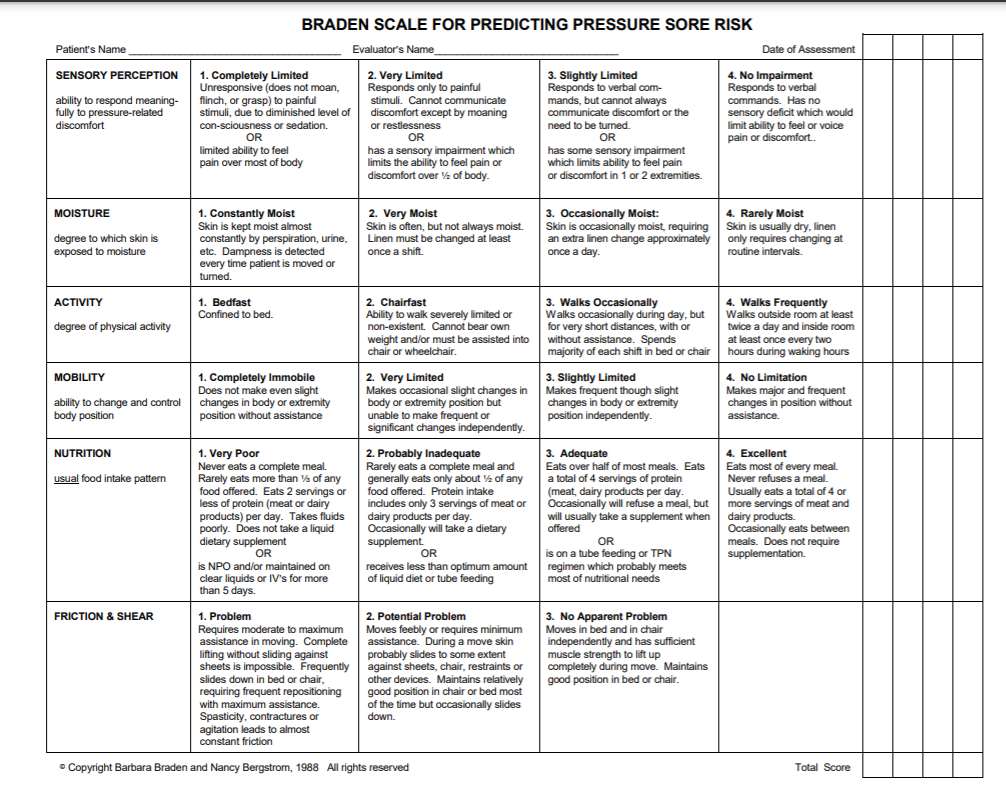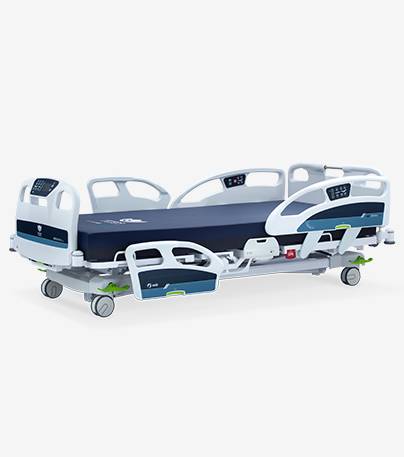
What are Pressure Injuries?

Pressure injuries, also known as pressure ulcers, decubitus ulcers, and even bedsores are localized injuries to the skin and the underlying tissues.
They usually occur over bony prominences – think head, shoulders, or heels – and are the result of pressure, or the combination of pressure with shear and friction. Pressure injuries are classified by stages. There are 4 main stages.
Here is a simplified definition to better understand how pressure injuries can evolve throughout time:
- Stage I is described as intact skin with non blanchable redness. It may feel warm and sensitive.
- Stage II is described as the skin that breaks open. It may also form an ulcer which is usually painful. It can look like an abrasion or an open ruptured blister.
- Stage III is characterized by full thickness skin loss. The sore extends into the tissue beneath the skin, forming a small crater.
- Stage IV is characterized by full thickness skin loss with extensive destruction. We can observe tissue necrosis, or damage to the muscle, bone and supporting structures such as tendons or joint capsules. Tunnels are often present.

Besides the main four stages described previously, pressure injuries can also be classified as either :

Deep tissue injury (DTI) :
an injury that begins underneath the skin. It can be described as a localized area of discolored intact skin or as a blood-filled blister. It is due to damage of underlying soft tissue from pressure and/or shear. Sometimes it can be misclassified as a pressure injury of stage 1 or 2. When the skin finally breaks open, these injuries are usually at a stage 3 or 4.
Unstageable :
can be characterized as full thickness tissue loss in which the actual depth of the wound is completely obscured by what is called eschar, which is a black leathery crust covering the wound. Since you cannot visualize the base of the wound, it is not possible to stage it.
What can affect skin breakdown and create pressure injuries?
There are two types of factors that can affect skin breakdown: intrinsic and extrinsic factors. Intrinsic factors include disease, mobility, activity, obesity, nutrition, and aging. These factors are different from each patient. Extrinsic factors, on the other end, are determined by the environment surrounding the patient.
In the case of pressure injuries, extrinsic factors can be impacted by the support surface on which the patient is laying on. The focus of this article will be on extrinsic factors which are pressure, moisture, shear, and friction.
Pressure

Pressure is a physical force that is exerted on or against an object by something in contact with it. A good example of pressure is a body lying on a mattress. Pressure is applied downward on the surface by the body lying on it. On the other end, the surface exerts a ‘’push back’’ pressure. This creates a compression on the skin and muscle layers. As the pressure becomes too high, small blood capillaries are occluded, depriving the skin and muscle cells of oxygen and nutrients. With time, a pressure injury will develop.
Moisture and maceration
Our second extrinsic factor is moisture, also known as maceration. This occurs when skin is exposed to fluid or moisture for prolonged periods. As the tissue softens, it is more susceptible to breakdown. Furthermore, a moist, wet, and warm environment promotes bacterial growth. It does not offer an optimal environment for healing and can worsen an existing wound.
Shear
The third extrinsic factor is shear. Shear is trauma to the skin caused by tissue layers sliding against each other. This can result in blood flow disruption and deprive the cells of nutrients and oxygen. Shear has been known to be worst than pressure for skin breakdown. It has been demonstrated that with increased shearing, very little pressure is required to develop a pressure injury.
Friction
Lastly, we have friction. Friction differs from shear as it is the result of surface damage like an abrasion. It is caused by the skin rubbing against another surface.

How can hospitals prevent pressure injuries?
Preventing pressure injuries is an important priority to hospitals. One way to assist with prevention is to evaluate each patient’s risk level of developing a pressure injury right from admission.
The tool used by most hospitals to evaluate the risk level is called the Braden Scale. This scale is made up of six risk factors comprising the Braden Score, which allow to evaluate the patient’s risk of developing a pressure injury:
- Sensory perception: Is the patient able to respond to pressure-related discomfort?
- Moisture: To what extent is the skin of the patient exposed to moisture? For example: incontinence, wound drainage, and perspiration.
- Activity: What level of physical activity is the patient able to do? Does the patient spend most of their time in bed or in a chair?
- Mobility: Is the patient able to change and control their body positions?
- Nutrition: What is the patient’s usual intake pattern? Nutrition isn’t only related to the amount of food, but also the variety of food and supplement intake.
- Friction and Shear: Does the patient require assistance to reposition themselves in bed?
Here is an of what the Braden Scale looks like and how healthcare personnel can attribute a score to each risk factor.

It is the final score, which can range from 6 to 23, that will determine the overall risk level of the patient. The smaller the number, the higher the risk of developing pressure injuries.
- Severe Risk: 9 or less
- High Risk: 10 to 12
- Moderate Risk: 13 to 14
- Mild Risk: 15 to 18
- No Risk: 19 to 23
Learning more about pressure injuries can help in choosing the appropriate support surface to address these concerns. Our line of Support Surfaces can assist your care teams in the prevention of pressure injuries.
About the author

Jasmine Joly-Dumont
More articles form Jasmine Joly-Dumont

Headquarters
230 Nilus-Leclerc Blvd.
L'Islet, QC G0R 2C0
CANADA
1 844 409-4030
Lévis Office
470 3e Avenue
Lévis, QC G6W 5M6
CANADA
US Location
11845 Adie Rd.
Maryland Heights, MO 63043
UNITED STATES
Sherbrooke Office
670, Joseph-Louis-Mathieu Rd.
Sherbrooke, J1R 0X3
CANADA
Careers
Our talented and passionate team is determined to revolutionize the medical industry. Be part of the journey: join the Umano Experience.
See available jobsConnect with us
Copyright © 2025 Umano Medical inc







